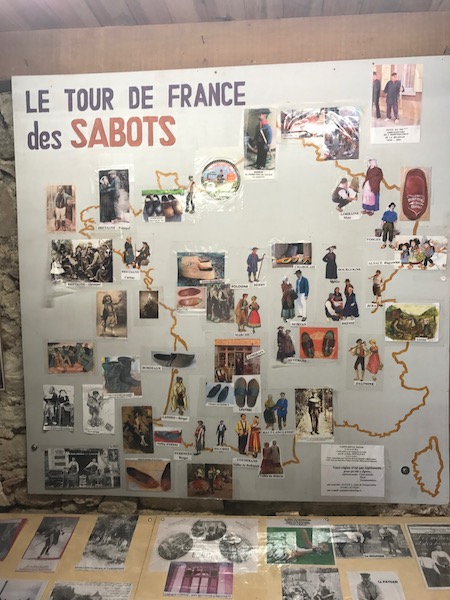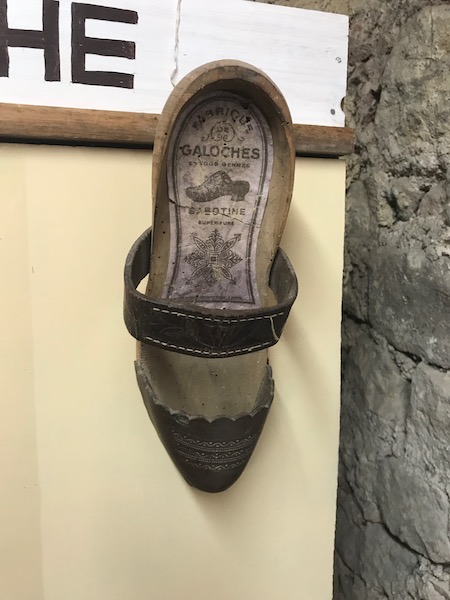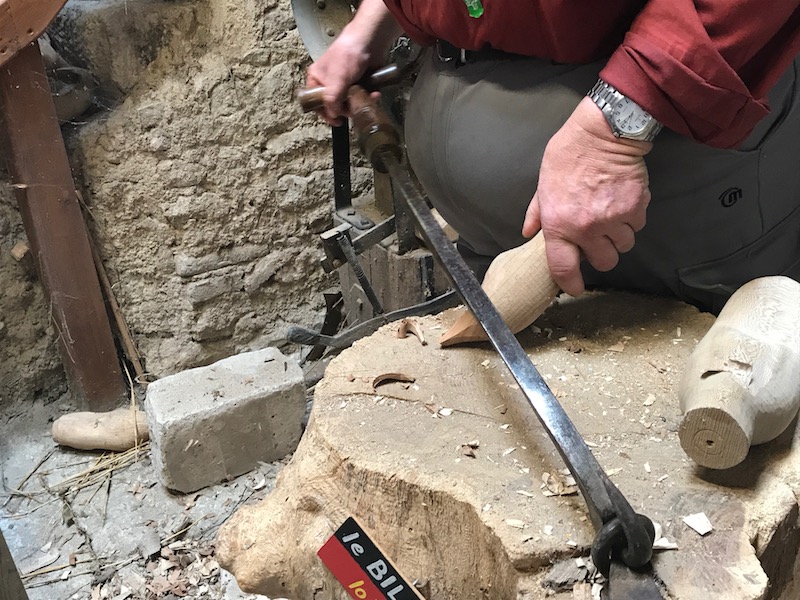Our Blog - Lautrec Pink Garlic Festival
When people used to ask me what we were going to do with our time when we retired, I would say … play golf, drink wine, and go to pickle festivals. It was only a small joke … throughout France, little towns and villages have festivals throughout the year, many of them based on food (in this case, I picked a pickle). Our first festival that we went to ended up being a Garlic festival … Pink Garlic to be exact (more on pink garlic a bit later).
We decided to drive out in the morning and come back in the afternoon. On the way out, we took the scenic route, driving through small villages and farms. After spending the day at the festival, we took the more direct route back on the autoroute. These are pictures from the road on the scenic route, which weaved through villages and farmland. The roads, which the majority were just one lane each way, had sections that were lined with trees ... like what you would see driving into a Southern plantation.










These are the area just around Lautrec, that we took when we parked. As you can see, you have the village and then hills with farms. France is the world's sixth largest agricultural producer and has one-third of all agricultural land within the European Union. Here in the South, it is mostly fruits, vegetables, and wines (Northern France has large wheat fields, dairy products, pork, poultry, and apple production are concentrated in the western region, and central France has the beef production). As we drove, we saw a large number of corn and sunflower fields. In the last picture, you can just make out the large wind turbines over the trees.






The purpose for our little trip ... the Pink Garlic festival! If you are like me, you have never heard of pink garlic, but it does in fact exist, and it comes from the village of Lautrec. Lautrec pink garlic is a protected geographical indication (PGI), which means that the entire product (the pink garlic) must be traditionally and at least partially manufactured (prepared, processed or produced) within the specific region and thus acquire unique properties. It has a pink inner skin, giving it the name, and a highly developed flavor. The pink garlic has been popular in Lautrec since the Middle Ages. Stories are told of a wandering merchant who was unable to pay for his meal at a local tavern; he settled his bill with a mysterious pink garlic. The surprised tavern owner decided to plant it and the pink garlic has been common to the area ever since.




Lautrec itself is a medieval village and is listed as among "The most beautiful villages of France". The name may seem familiar, as part of the name of a famous painter, Henri Toulouse-Lautrec. The last part of his name indicates that his is a descendant of the Counts of Toulouse and the Vicomte of Lautrec. It was founded in 940 at the foot of a rocky outcrop, which provided an ideal defensive location. The tourism office had a nice little model of city, which showed the key sites. As you can see, it was very much a medieval, walled city. You can also clearly see the rocky outcropping with the cross on top (more on this later).



We took a few general pictures of the streets and buildings within the medieval village. Many of the buildings are quite old and have the exposed wood architecture.





Within the central market square, the oldest architectural fragments date back to the 13th and 14th centuries. The timber-framed houses were built at the end of the 16th century.






The central square was were a lot of the events happened, including the Rose Garlic soup tasting (which was free during the festival). It was actually pretty good for being, well, garlic soup. It has chicken broth, garlic, vermicelli, salt and pepper, and (yea, this one shocked me), a bit of mayonnaise.
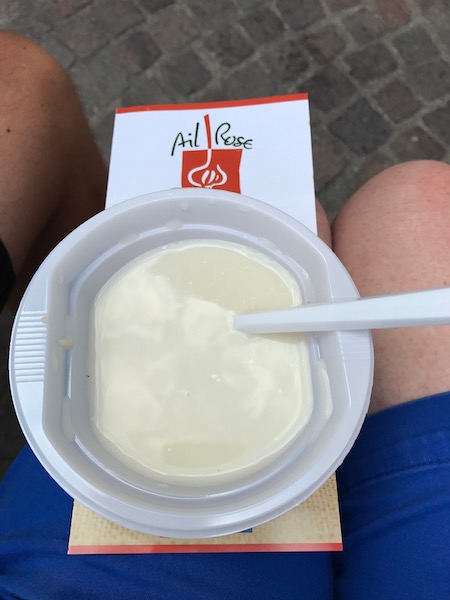
Also in the central square, there was a herding dog demonstration. Herding dogs, like the Australian sheepdog, are used by farmers to keep mainly goats and cows on their farms. They demonstrated how the dogs work by having the dog "herd" a set of geese around the square, following a couple kids (with the staff, which would be the farmer) as they walked around. Then they got kids to be in specific places and had the dog "herd" the geese around them. It was actually an interesting demonstration.








A bit after the puppy demonstration, there was a demonstration of folk dancing from a few different areas in France.

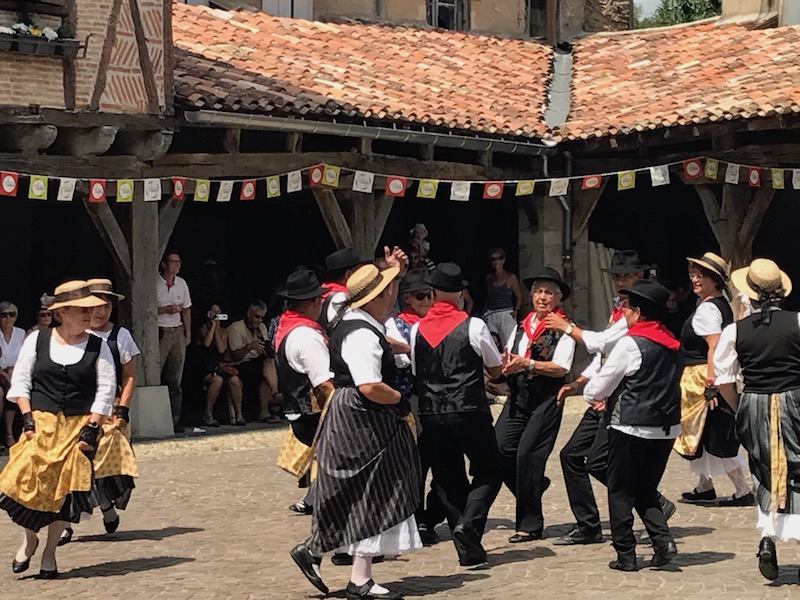






Okay, so now to more of the sights of the village. In the 13th century, there were 8 gates into the city. Only one of them survives today, that being the Caussade Gate. You can see the exterior of the gate in the pictures of the model above. Each gate was flanked by a square tower for defense. There is a small covered area directly over the door and a wooden walkway between it and the tower (which is no longer there, just one wall is visible), and then stairs down to the ground, inside the walls. Just inside the gate is what remains of one of the oldest houses, and I attempted to get a close-up of the walls, which have the wood timbers and then a mix of straw and mud/clay which is fills in the spaces between them.

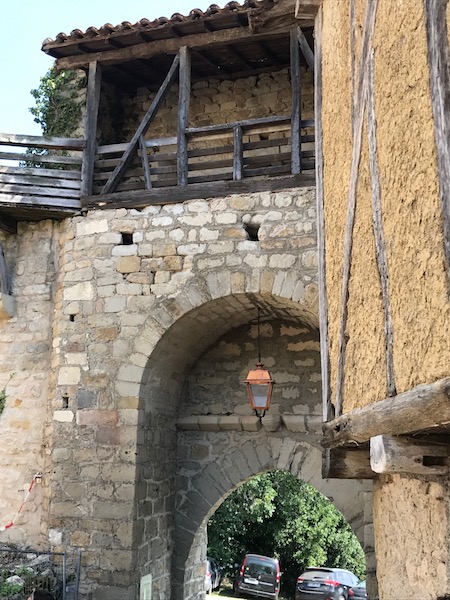


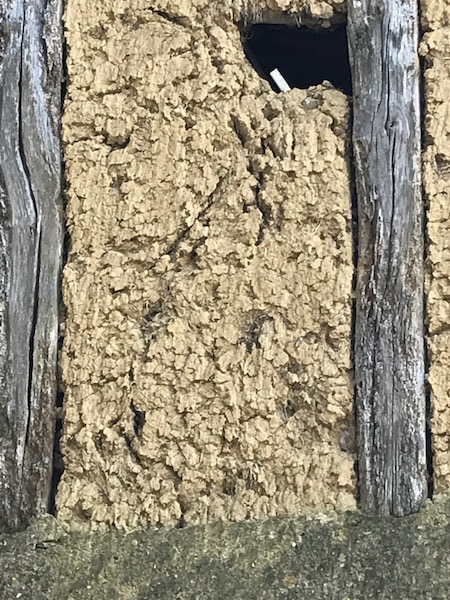
The construction of the Saint Remy collegiate church began in 1394 and was dedicated with the name Notre Dame de la Paix (translation: Our Lady of Peace). In 1615, the College of Canons came there from the monastery of Stain-Pierre de Burlats, making it the Collegiate Church of Saint Remy. The building remains the oldest building in the village. The exterior is, well, pretty boring. But inside, it is much nicer. A sumptuous 13-meter-high canopy of gilded wood, shaped like 4 arms and garlands of roses, supports a dome surmounted by a cross. A beautiful angel in gilded wood holds a crown in his hands. The organ dates back to 1893.




On the interior, it has semi typical shape, with the nave and altar in the middle, and then side chapels around the exterior. However, most older French churches (Romanesque and Gothic Christian) have a cruciform or cross-shaped architecture, with a transept traversing across the building in front of the altar.

There are 8 side chapels, including the Chapel of Jeanne d'Arc (Joan of Arc). Having a chapel dedicated to Joan of Arc seems quite common, from what we've seen so far.


The altar is in the form of a high canopy with arms of garlands of carved wood roses. The 4 columns are of Caune marble (generally red or pink marble that comes from the Caunes-Minervois area in Southern France). In the middle is a large painting of the crucifixion that dates back to 1610 by a painter named Gamelin.


I don't have any details on the stained glass, but they were quite nice. I suspect these were added later, probably in the 1800's if I had to guess.

The vaulting of the ceiling was done in 1768 and then painted in 1852 by Jacques Pauthe. Within a blue background, there are medallions with representations of the 12 apostles as well as 12 other saints of the church. The ceiling of the sanctuary has 4 medallions: one represents the glorification of Bishop Saint Remy and the other 3 containing musician angels. For me, the ceiling is the best part of the church.




The Tourism Office is near one of the entrances into the village and is housed in a former Benedictine Convent from the 17th century, with a nice French garden in the courtyard that was designed by Le Notre (Gardener for King Louis XIV and designer of the gardens of Versailles). It was actually a pretty good tourism office for such a tiny village but I guess that is because probably most of the village economy is now tourism. I had noticed that they had a walking tour of "Lautrec sous terre" (under ground) that was offered during the festival and so we stopped in to see if any there were any openings. Luckily, they had a couple places available so we were able to go. Mind you ... it was in French and the guy, an archeologist, didn't really speak all that clearly, so we only got about 25% of what he said. We headed out and went into the basements of several of the buildings in the old city. For example, under the town hall there are various old caves and a passageway that went under what is now the street over to the building on the other side. We also took a few more pictures of just the village as we walked through.




In the cellar of a 14th century half-timbered house are these silos. The room was discovered in 1990 when there was work going on. There are 12 hollow sandstone silos built down into the ground (well, they are now in the ground, I couldn't tell if they were originally or not) that date from the Gallo-Roman era. I *think* he was saying that these were used to store grain and could keep the grain good for 10-12 years. So for example, if you were rich, you could store grain here and during bad years, could make money selling it to people who were in need of food.

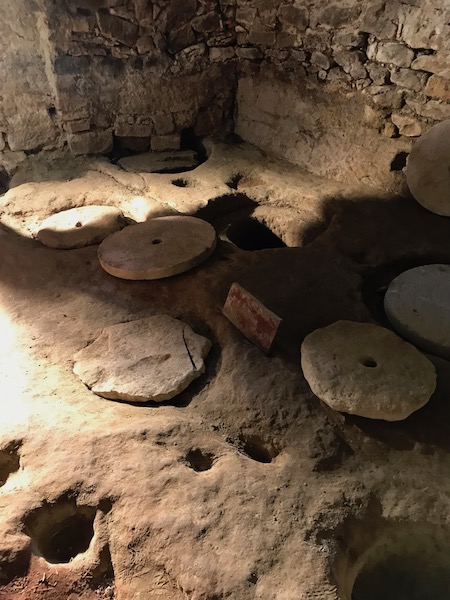
Here we went under another house and could see (if we understood him correctly) parts of the original walls surrounding the city and one of the gates (I mentioned there were 8 of them but only 1 is left). I think he said that this opening is another one of the gates, which is now hidden and buried under buildings.


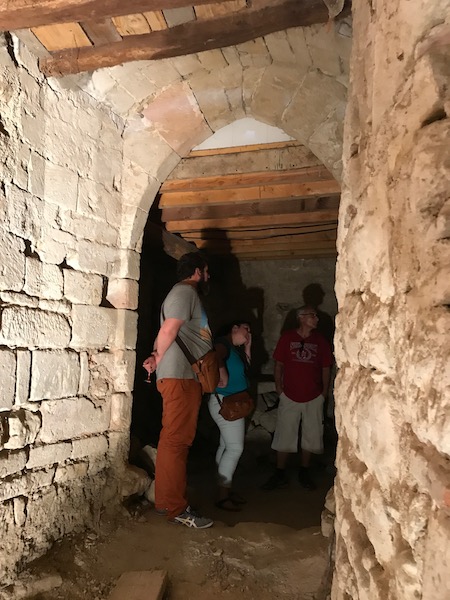
This area was previously an open-air theater (now just a little park).

Walking up the outcropping, there is a 17th century windmill (restored in 1991), one of the few still working today in the South of France. This one was used to make flour. You can actually go inside but the line was a bit long, so we skipped it.


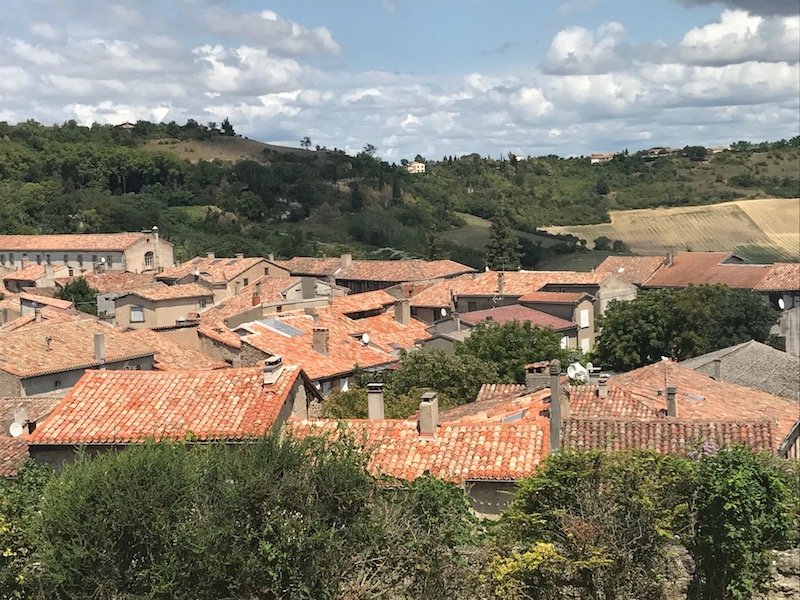






The Calvaire de la Salette is at the top of the rocky outcropping, at a height of just under 1,100 feet. There is a large cross at the top, and from here you have a great view of the entire surrounding area ... the farmlands, the village, the windmill, and the Agout river valley. There is a map at the top which shows directions and looking South, you can see the Pyrenees Mountains.





From the top, we got a nice picture of the church of Saint-Remy from the other direction, and you can see how packed it is inside the village, with houses all around it.
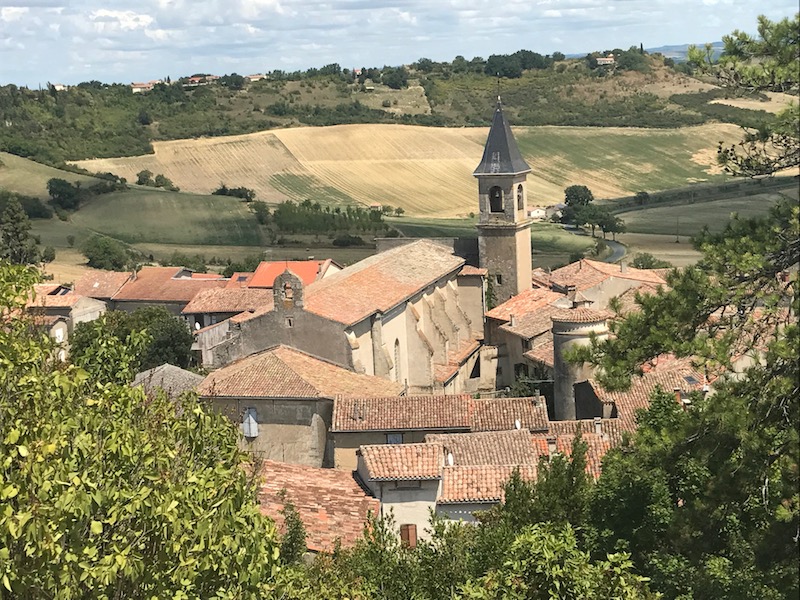

So, not really "part" of the village history, but as we walked down, I saw this lizard sitting on the side, so I took a picture ... and interestingly enough, he didn't move ... so I slowly went around him, taking pictures, and he STILL didn't move!!



I haven't really said too much about the garlic harvesting process yet. The plants are ready to harvest when the tops begin to yellow and fall over but before they are completely dry. The dirt is brushed off and then they get hung in bunches to dry. They had a set of people then taking those and putting them into the little packs that they were selling. The first guy trimmed the stem to the length they wanted and took off the roots. Then they would peel off some of the outer wrappers, in this case, down to where you can see the pink color. They then get weighed out ... they were selling in 500 gram and 1 kilo bundles. Once he had the right amount of weight, he would then put them together, wrapping a string around them, and then voila .. they are ready to sell! We bought a small pack, 500 grams, and we have them hanging up in our pantry room, ready to use.





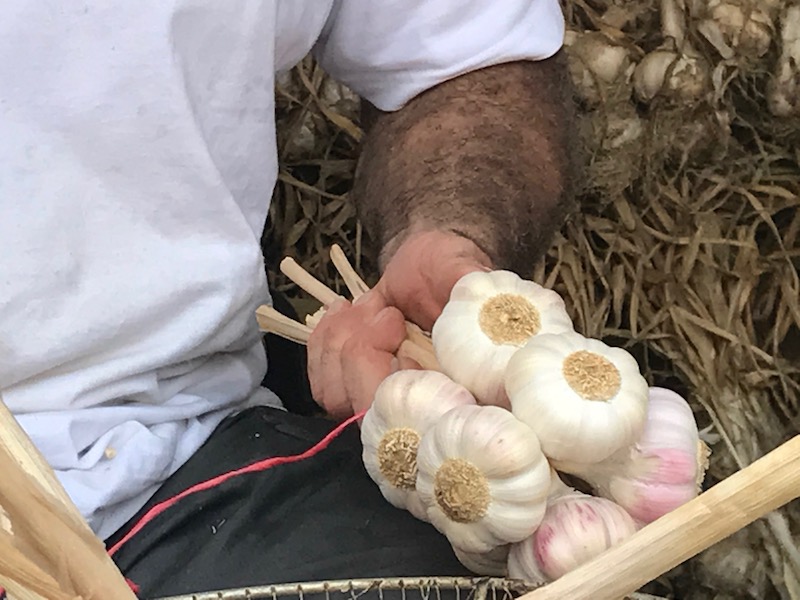


We then stopped by a clog-making workshop. This isn't an actual clog-making workshop anymore ... they just give demonstrations. It has all of the equipment for making clogs and they were still making clogs here until the early 1960s. They demonstrated how they would use the machines and the the forms on the wall to make the clogs. The first step would be to select the correct form for the exterior shape and the machine would then follow the chosen form and make a copy in a new piece of wood. The second step follows the same process, but with a form that defines the interior of the clog. The last step is the finishing, which is always done by hand, and includes final shapes, painting, and putting on decorations.

